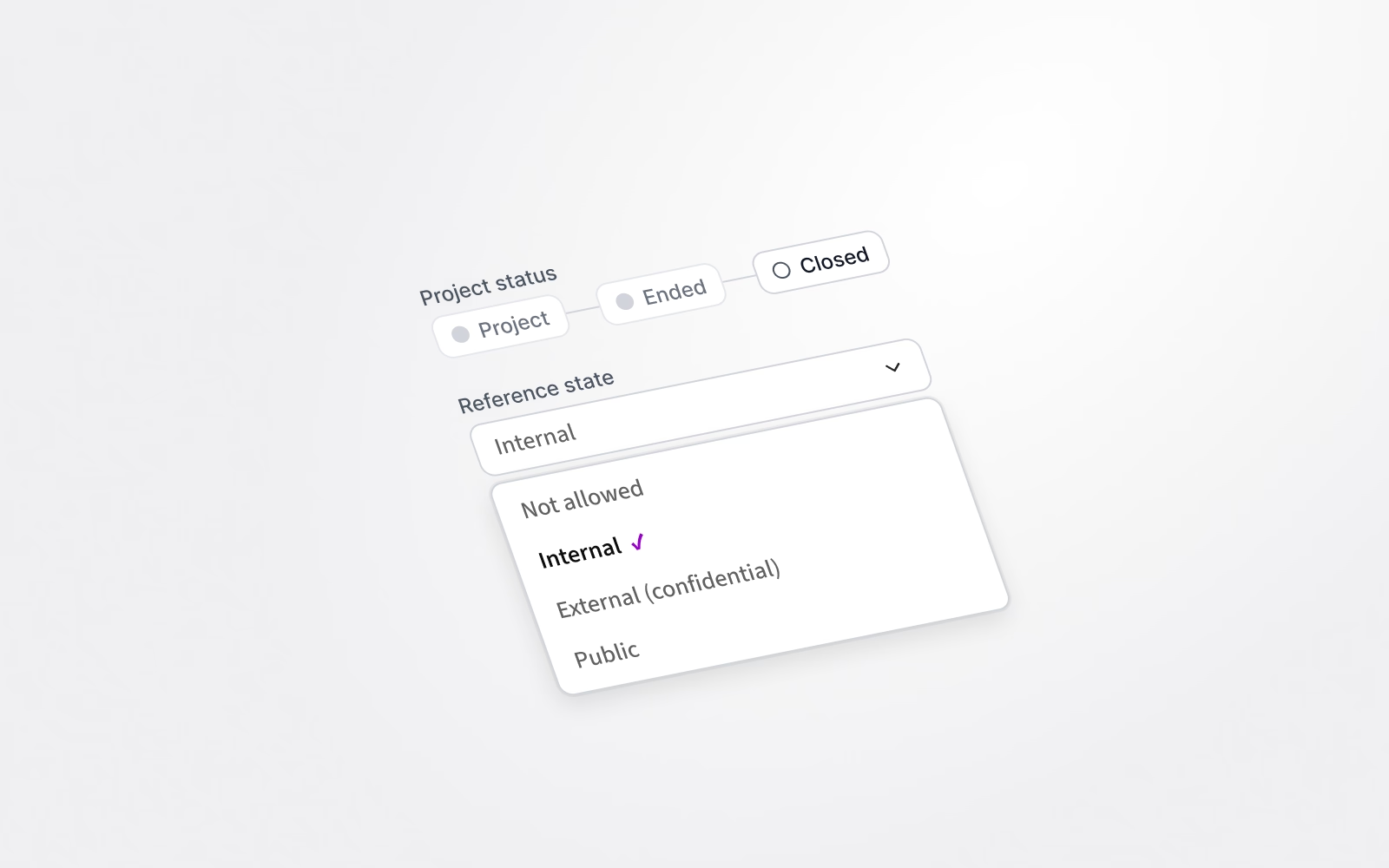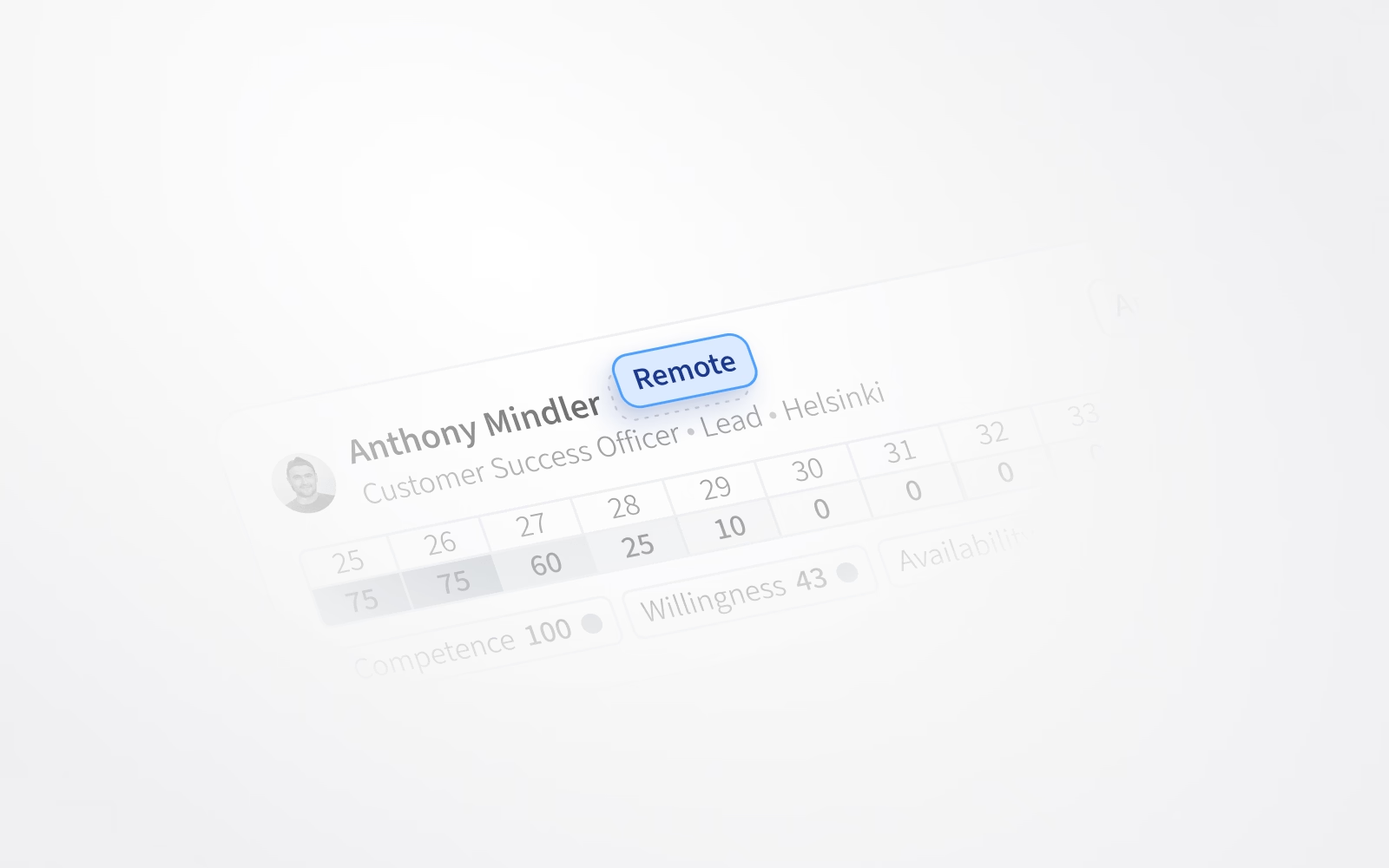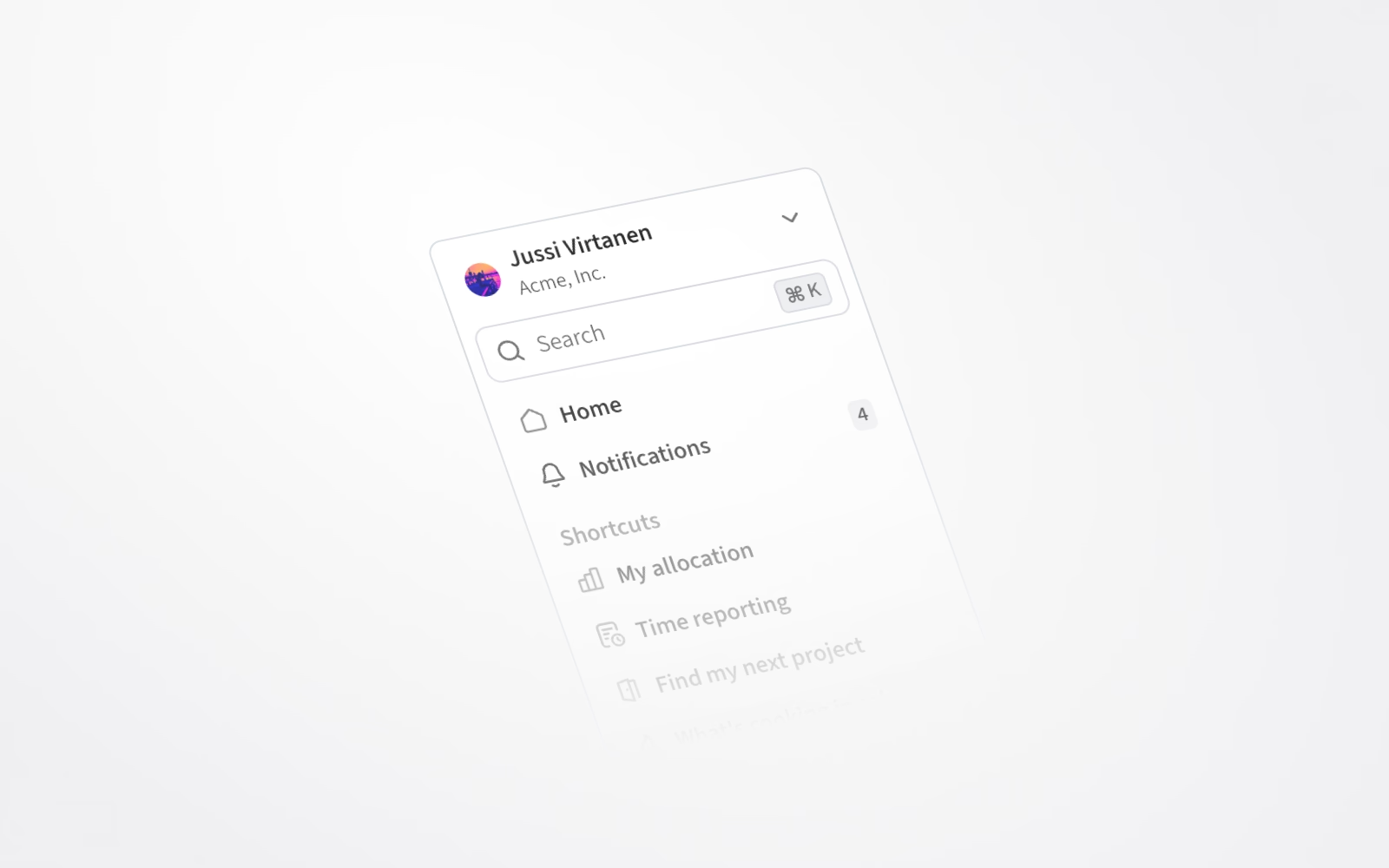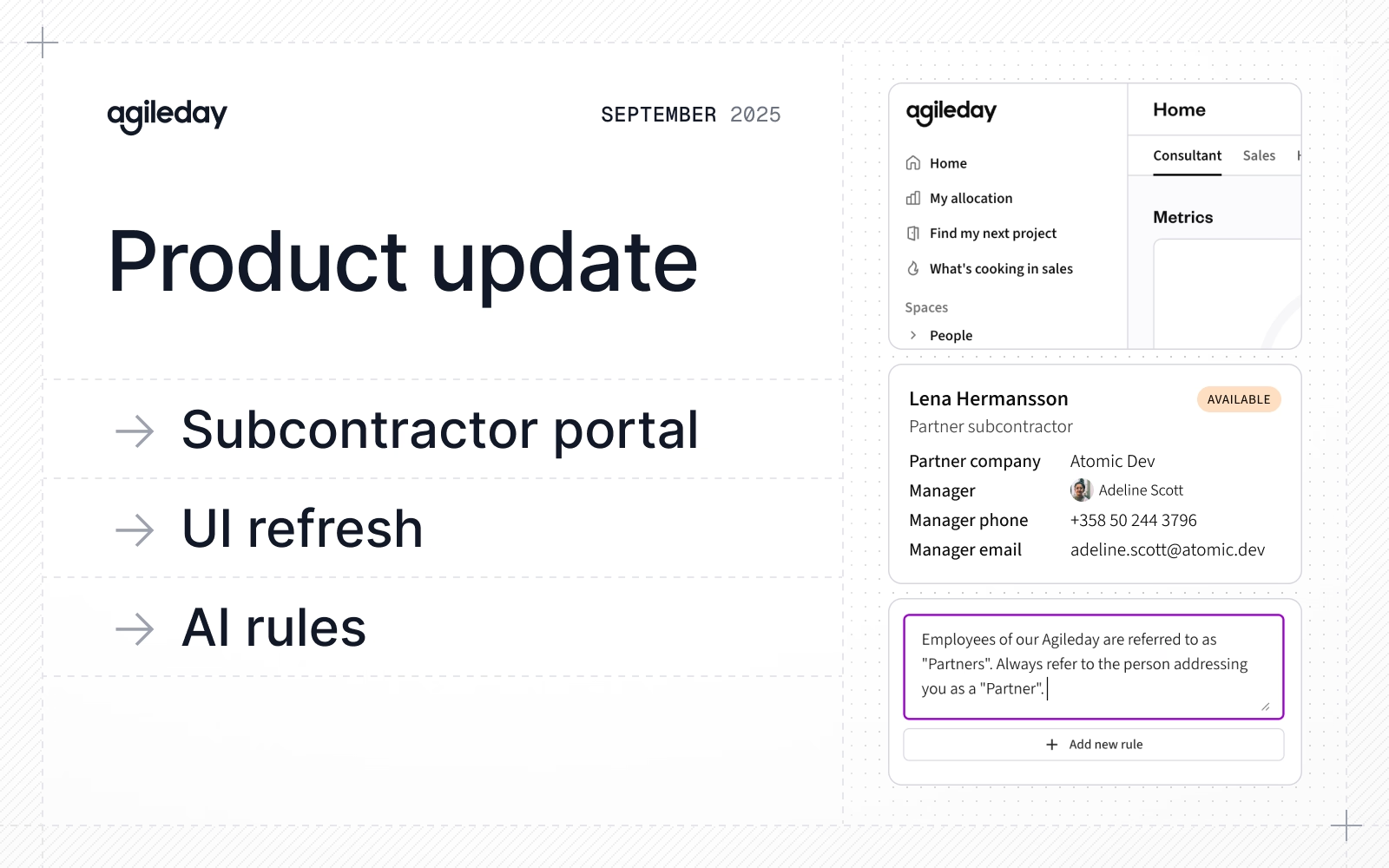Product update: October 2025

Summary
October brought us these new features and improvements:
- Improved project lifecycle: New “Closed” stage, updated “Ended” stage, and project reference internal notes and status.
- Staffing labels: Capture additional consultant details in a tag to enhance staffing accuracy and speed.
- API and SCIM improvements: Enjoy snapshot data, improved query parameters, and better performance in time reporting and allocation reporting APIs.
- Account menu: Glance at the sidebar to see in which Agileday environment you’re in.
- Improvements and fixes: Country-level ability to ignore public holidays, project’s total allocated hours, grouped absences, and more.
Let’s dive into the details.
Improved project lifecycle

Earlier, when a project contained only past allocations, it was automatically marked as “Closed”. To clarify the project stage, we renamed this stage to “Ended” and introduced a new manual “Closed” stage. Unlike with an “Ended” project, a “Closed” project can no longer be added to Time Reporting or Billing.
In addition, we’ve expanded the project reference section with two additions:
- Reference status
- Internal reference notes
Reference status indicates how a reference should be used. The available values are:
- Do not use
- Internal
- External (confidential)
- Public
If you would like to provide more details on how to use the project reference, add them to the new internal reference notes section.
Staffing labels

People in staffing already use our staffing notes feature to record information about individuals. Today, we’re introducing staffing labels, a new feature that allows staffing personnel to assign labels to individuals. Like staffing notes, staffing labels are visible only to staffing personnel.
For example, if you’d like only staffing personnel to see if a person works remotely, you could assign them a Remote staffing label. In case you want the label to be visible in the user’s profile, use regular labels.
Staffing labels are configured in settings and are assigned to a person in their profile. They are visible in all relevant views and can also be used as filters.
Staffing labels (and notes) are behind a feature flag. Contact your Customer Success Manager to give them a spin.
API and SCIM improvements

We’ve made significant improvements to our API, namely:
- Time Reporting API: Version 2 is now faster and introduces the option to use yesterday’s snapshot data, allowing you to efficiently fetch large datasets without performance issues.
- Allocation Reporting API: Version 2 is here! It’s faster and leverages yesterday’s snapshot data for large-scale queries without performance impact. For real-time data, use the existing APIs.
- Opening API: We added two new items to the Opening API response: Parent type (Opportunity, External, Internal, Absence) and Staffing managers.
Like our other next-generation APIs, the v2 APIs support more flexible query parameters for advanced filtering and reporting.
On the same note, our SCIM implementation also enjoyed a bunch of valuable additions:
- The
Usersendpoint now supports filtering by email, improving integration and user management workflows. - Group memberships can now be managed directly via user attributes.
- We added
userNamesupport to the Employee API, simplifying transitions from manual user management to SCIM. - Users can be disabled via SCIM.
- We added detailed error messages when a user cannot be deleted.
Account menu

Last but not least, we’ve continued to improve our user experience and interface. To make it easier to see which Agileday environment you’re in, we've replaced and relocated the existing account menu (the small avatar in the top right corner) to the sidebar, and added your name and the environment name to it.
While we were at it, we also moved other items to the sidebar:
- The search toggle now shows its shortcut,
CMD/CTRL + K - The notifications toggle now shows the notification count
- The time reporting link was moved from the account menu to the sidebar for faster access
- As a bonus, when you have multiple sidebar menu sections open, try holding the
ALTkey while clicking to collapse a section. Can you guess what happens?
Improvements and fixes

We’ve already covered a lot, but there’s even more:
- In Country settings, it’s now possible to turn off statutory holidays for individual countries. This is useful if country-specific holidays are not used.
- In the Staffing view within a project, we now also display the total allocated hours for each project, providing a more complete view of project workload.
- In the People view, users’ absences are now combined into a single row. The row can be expanded to view each absence allocation.
- In the Allocations / People view, it’s now possible to also show Opportunities, making it possible to view speculative allocations.
- Users can no longer be un-contracted from an Opening if hours have already been reported.
- When viewing invoices, you can now select any active currency to display invoice totals converted into that currency. Invoices are converted using the exchange rate as of the invoice date.
- On some occasions, a lock icon was shown even for unfrozen weeks. Lock icons now appear only where they should.
- In split weeks, allocation comparisons previously evaluated the whole week instead of only the days belonging to the selected month. Split-week comparisons now respect the selected month.
- In time reporting, when adding a project, the global default task was incorrectly used even when the project had its own default task. Time reporting now uses a project’s default task.
- The time reporting task selector is now wider, ensuring that longer task names remain legible.
That's it for October, see you again next month. Until then, let us know if you have any questions.



